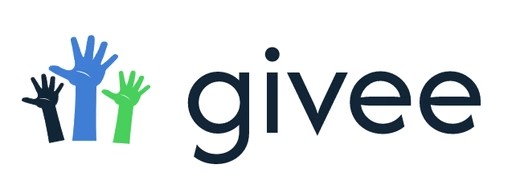How to Create a High-Converting Donation Page: Clearly Communicate Your Mission, Make It Easy for Donors to Give, and Boost Donations
on
Sep 26, 2024
Why Your Donation Landing Page Matters
Think about it, your nonprofit’s landing page is often the first (and maybe only) chance you have to convince someone to donate. Whether they’re visiting from an email, social media post, or search engine, once they land on that page, you have just a few seconds to capture their attention and inspire them to act.
But here's the truth: many landing pages miss the mark. They’re either cluttered, confusing, or don’t clearly communicate the urgency of the cause. A well-designed, high-converting landing page is a game-changer for nonprofits. It can significantly boost your donation conversions by making the process easy, emotional, and compelling for visitors.
The goal of a donation landing page isn’t just to inform people about your mission it’s to get them to take action right now. Every part of your page, from the headline to the call-to-action (CTA), should be working toward that goal. And the best part? You don’t need a big budget or a tech expert to create a page that works. You just need the right strategy and tools.
Ready to turn your landing page into a donation-driving machine? Let’s get started with some simple, actionable steps that you can apply today!
Use a Proven High-Converting Landing Page Structure
A great landing page doesn’t just happen by chance, it follows a well-tested structure that encourages visitors to take action. Your donation page should do one thing really well: make it easy for people to donate. But in order to do that, there are a few key elements you need to focus on. These elements work together to create a seamless experience that both inspires donors and makes the process straightforward.
Clear and Compelling Headline
Your headline is the first thing people see when they land on your page, and it needs to make an immediate impact. Think about it as your "elevator pitch" in one sentence, you should clearly communicate your cause and why it’s urgent.
For example:
"Help Us Provide Clean Water to 1,000 Families This Month"
"Support Local Students: Every Dollar Helps Us Supply School Supplies"
A headline like this is clear, actionable, and speaks directly to the donor’s emotions. Avoid vague phrases like "Support Our Mission" be specific about what their donation will do and why it matters now.
Concise and Emotionally Engaging Copy
Your copy should be short, to the point, and packed with emotion. People are more likely to give when they feel a connection to your cause, so use storytelling to draw them in. Focus on the impact their donation will make and the real-world changes it will support. Donors need to know exactly who they’re helping and why. Your mission should be clearly communicated in a brief but impactful way. Think of it as the "why" behind your organization what difference will their donation make?
Here's an example:
Instead of saying: "We provide food to those in need."
Say: "With just $10, you can feed a child for a week and help them thrive in school."
"Your donation today will help provide safe shelter for families in need."
"We aim to send 500 underprivileged kids to school this year, will you help us?
Focus on the Donor
Make the donor the hero of the story. Instead of just talking about what your nonprofit does, show how they are making the impact. For example, say: “Your donation provides children with clean water,” instead of “We provide clean water to children.”
Keep it Simple and Direct
Don’t overcomplicate things. Use clear, concise language and avoid jargon. People should be able to understand your message within seconds.Tell a Story
Share a brief, powerful story that highlights the urgency of your cause. For example, “Meet Maria, a mother of three who has to walk five miles every day to get clean water for her children. Your donation can change her life.”Emphasize Urgency
Encourage people to take action now by showing the immediate need for donations. Using phrases like “Give today to help us reach our goal” or “We need your help now” can create a sense of urgency.Use Emotional Triggers
Donations are often driven by emotion. Highlight the human side of your cause. Whether it’s the joy of providing education, food, or healthcare, connect emotionally with your audience.Keep It Scannable
Make sure your copy is easy to scan. Break it up with headlines, bullet points, and short paragraphs so readers can quickly get the key points.
Keep your copy focused on how the donor can make a difference and avoid overwhelming them with too much information. Remember: this isn’t the time to explain your entire nonprofit history - it's about compelling action.
Call to Action (CTA)
Your CTA button is where the magic happens. Make it big, bold, and clear. Use action-oriented language like “Donate Now” or “Help Us Make an Impact Today.” The more straightforward and actionable your CTA is, the more likely people are to click it.
Social Proof
People like to follow others’ actions, especially when it comes to giving. Include some form of social proof, like testimonials, donor counts, or recent donation updates. Something like, “Join 2,000 others who have already donated” can be very persuasive.
Impactful Imagery or Videos
A picture is worth a thousand words, and an image or video can often convey your message faster than any text. Choose images that show the human side of your cause, faces, smiles, and moments of change. Even better, use short videos to tell a quick story of how donations have made a difference.
For example, a short clip of a student receiving a scholarship or a community benefiting from clean water is far more impactful than stock photos. It brings your mission to life.
Trust Signals
Donors want to know their money is going to a trusted cause. Include security badges, charity certifications, or anything that assures visitors that their donation is secure and being put to good use. This is especially important for first-time donors who may not know much about your organization.
Optimizing Your Landing Page Design for Donations
Your landing page design plays a huge role in how donors engage with it. Here’s how to make sure it’s optimized for conversions:
Branding
Your landing page should be consistent with your overall brand. This includes using your logo, colors, and fonts that match your nonprofit’s identity. The more recognizable and trustworthy your page looks, the more comfortable people will feel donating.
Color Psychology
Choose colors that align with your brand but also inspire action. For example, green suggests growth and hope, while red can create a sense of urgency. Your CTA button should stand out—use contrasting colors that draw attention to it.Font Choice
Make sure your font is easy to read across devices. Stick to simple, legible fonts and avoid anything too decorative. Remember, readability is key to keeping visitors engaged.Mobile Optimization
Since many people will visit your landing page from their phones, your page needs to look great and function smoothly on mobile devices. Test the donation process on smartphones and tablets to ensure everything is easy to navigate and loads quickly.
Mobile Optimization: Make It Seamless Across Devices
More than half of web traffic today comes from mobile devices, so your donation page needs to be mobile-friendly. If your page is difficult to navigate on a phone or tablet, you’ll lose potential donations.
Responsive Design: Make sure your page automatically adjusts to fit different screen sizes, whether it’s a desktop, tablet, or smartphone.
Easy Input Fields: On mobile, forms should be easy to fill out. Large buttons, simple forms, and autofill options all make the donation process smoother for mobile users.
Test your page on various devices to ensure a flawless user experience, no matter how visitors access it.
If you feel you are struggling fixing or setting up your landing page, let us help you! Contact us here.
Test and Optimize
Even after setting up your landing page, there’s always room for improvement. To make sure your page is performing at its best, follow these steps:
A/B Testing
Test different elements of your page, like headlines, CTAs, or images. See what resonates most with your audience and drives more donations.Track Your Results
Use tools like Google Analytics to monitor your landing page’s performance. Keep an eye on conversion rates, traffic sources, and how long visitors spend on your page. This data will help you make informed decisions on what to improve.
Final Touches for a High-Converting Landing Page
Finally, here are a few last details to make sure your landing page is top-notch:
Load Speed: Slow pages can cost you donations. Use tools like Google PageSpeed Insights to ensure your page loads quickly.
Accessibility: Make sure your landing page is accessible to all visitors, including those with disabilities. This ensures you’re not excluding any potential donors.
Testing Across Devices: Double-check that your landing page looks and works perfectly on desktops, smartphones, and tablets.
The Importance of Post-Donation Elements
Once a donor has made their gift, it’s important to continue the relationship by expressing gratitude and reinforcing their decision to support your cause.
Thank You Page: Reinforce Gratitude and Engagement
A thank you page isn’t just a formality, it’s a chance to continue building the connection with your donor. Use this page to express heartfelt thanks and remind them of the impact their donation will have.
Personalized Message: Thank the donor by name if possible, and highlight how their gift will help your mission.
Next Steps: Encourage further engagement, such as signing up for your newsletter, sharing your cause on social media, or learning more about your work.
Automated Email Receipts: Personal and Professional
Sending an immediate, automated email receipt is important for tax purposes, but it’s also a great opportunity to continue showing appreciation. Make this email feel personal, avoid making it feel like a generic transaction receipt.
Thank You Again: Start with a personal thank you and a reminder of what their donation will do.
Follow-Up Information: Let them know what they can expect next, updates, stories, or additional ways to get involved.
Follow-Up Communication: Keep Donors Engaged
The donation shouldn’t be the end of the conversation. Send regular updates about the impact of their gift helps donors feel valued and connected to your nonprofit. This could be through newsletters, personal stories of those benefitting from the donations, or invitations to special events.
Conclusion: Start Scaling Donations Today!
Creating a high-converting landing page is one of the most effective ways to scale your donations quickly. By following these steps, nonprofits of any size can build a landing page that drives action, whether you’re aiming for one-time gifts or recurring support.
Need help getting started? We’re here to assist you in creating a landing page that not only looks great but converts visitors into long-term supporters. Reach out to us today, and let’s start scaling your donations together!
Related Articles
Unlimited Pages and Leads: The Key to Growing Your Business Without Limits
Jan 25, 2025
How Landing Page Audits Can Transform Your Conversion Rates
Jan 24, 2025
Why Your Business Needs a Dedicated Conversion Expert to Grow Revenue
Jan 22, 2025
Receive the best tips for your non-profit campaign!
Get free tips to increase revenue
Most of our suggestions take a few minutes to implement.

